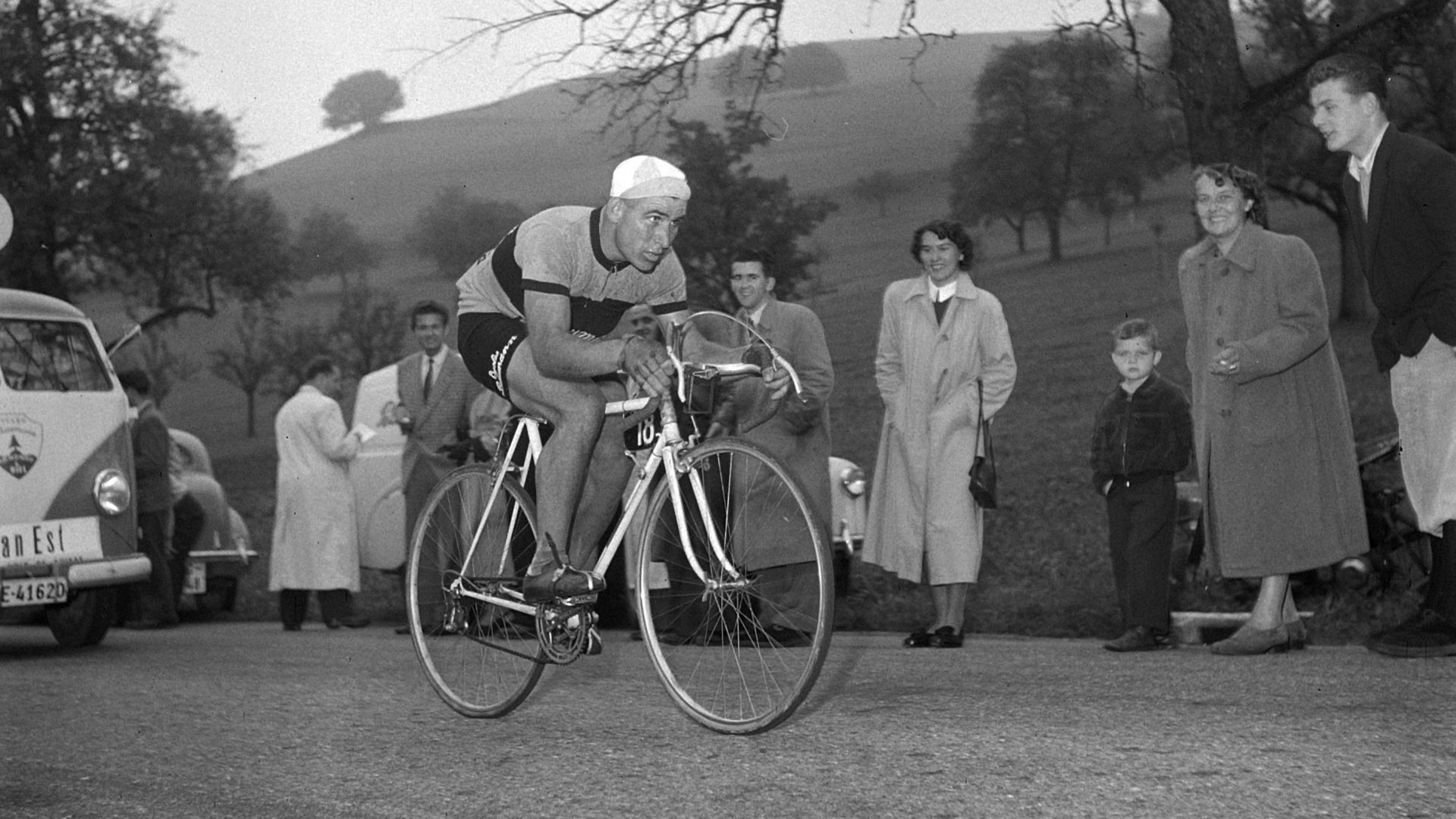On a rest day during the 2001 Tour de France, an elderly man stood at the roadside on the Col d’Aubisque and wept.
Dressed in a shirt, tie and thin blue jacket, he had just unveiled a plaque affixed to the rock face of the steep Pyrenean mountain pass to a whirr of camera shutters and a smattering of applause. But this was not exactly a celebration, even if the 78-year-old had tried to smile after removing the ceremonial cloth.
Tears came immediately as half a century of residual trauma surged into the man’s shining wet eyes and the rigid, agonised slit of his mouth.
“Boys, we’re still here,” he gulped eventually in Dutch between heaving breaths. “What did I do to deserve all this? And to think of all those people who are no longer here…”
There are lives that turn on or are defined by a single moment. A split-second can be all it takes, gone in an instant but seared on to the life of the person involved either as a form of rebirth or a life sentence.
This is especially true of sportspeople. A shot, a serve, a punch, a swing; one moment defining victory or defeat, success or failure, forging the legacy of a lifetime. Sometimes that moment transcends sport altogether.
On the morning of July 17 1951, Wim van Est stood on the threshold of glory. At the end of the previous day the 28-year-old Tour de France debutant from the Netherlands had become the race leader, so when he felt the sun on his face at the start line of the 13th stage it was as the first Dutch cyclist ever to wear the yellow jersey.
The prospect of retaining it was a daunting one considering the 200km ride from Dax to Tarbes that lay ahead – the race’s first mountain stage.
For a rider who had rarely left his home nation this was van Est’s first-ever serious climb and descent.
He was ready for it, though. They didn’t call him “The Locomotive” for nothing.
He handled the ascent with admirable tenacity, staying well in touch with a leading group packed with experienced climbers. The descent, meanwhile, was a tricky one, riddled with tight, steep hairpin bends against a sheer drop with no barrier.
Tackling the early turns cautiously, the first time he took one at speed his machine slid from beneath him. As he remounted, the Italian rider Fiorenzo Magni swished past.
“Magni was known to be a great descender,” van Est recalled later. “I didn’t see any danger in following him and we came close to the leaders very quickly.”
When Magni shook him off and van Est tried to close the gap, disaster struck. “The road was wet from the snow and there were sharp stones kicked up by the cars. My front wheel hit them and over I went. I wanted to go left but the bike… the bike went straight on.”
Straight on meant off the edge of the precipice, shooting Van Est out into the abyss of a yawning 1,000-foot ravine.
Briefly, he noted the sudden silence, long enough to think how peaceful it was, then kicked his bicycle away and began scrabbling at the foliage to break his fall and save his life. By sheer good fortune, he managed to grab at a small tree protruding from the rock that slowed his descent enough to fall heavily on to a narrow ledge 200 feet below the road.
“A little left or right and I’d have dropped several hundred metres down on to solid rock,” he recalled.
Just one person had seen van Est go over, the Belgian cyclist Roger Decock. Sacrificing his own fifth place in the race he skidded to a halt and desperately flagged down anyone who approached until the Dutch team car arrived. Decock and the team officials called van Est’s name and when nothing came back but their own echoes they feared the worst.
Then, a weak cry and a glimpse among the foliage of a bright yellow jersey, “like a dandelion,” as Decock put it. A bloodied van Est was attempting the impossible task of climbing back up the rock face. Persuading him to wait for assistance, the Dutch officials set about turning the 40 spare inner tyre tubes they carried into a makeshift rope that was lowered to van Est.
An hour after he’d shot out into the mountain air, the Dutch rider was hauled back onto the road. Delayed shock brought on a flood of tears but he was in almost miraculously good shape.
“My ankles were hurt, my elbows were kaput,” he said. “I was bruised and shaken up and I didn’t know where I was, but nothing was broken.”
Predictably, he wanted to rejoin the race immediately and it took some persuasion to convince him to withdraw and go to hospital.
For the rest of his life, Wim van Est was the man who should have fallen to his death in the Pyrenees. Shortly after leaving hospital, he played on the accident in an advertising campaign for the Dutch team’s sponsor, Pontiac watches, with a poster campaign showing van Est saying: “I fell 70 meters deep, but my Pontiac was still running !”
Nothing else he achieved would eclipse that split-second of dubious fortune that flung him into the void. Yet he would ride in seven more Tours de France, finishing a career-best eighth in 1957, win three world championship pursuit gold medals and win the gruelling Bordeaux-Paris race three times.
Two years after his fall he became the first Dutch rider to wear the leader’s pink jersey in the Giro d’Italia, weeks after winning the Tour of Flanders.
His was a career of which anyone would be proud, so to be defined by that one extraordinary moment in the mountains belied a hard-earned place among the greats of Dutch cycling. Not least when his road to the yellow jersey had begun in crippling poverty.
The second of 16 siblings growing up on a makeshift farm in North Brabant, van Est began cycling long distances into Belgium during the second world war, smuggling tobacco and cheese that he traded for soap to sell on the Dutch black market in order to put food on the table.
Despite a six-month prison sentence once he was caught, van Est was never happier than in the saddle and after the war began competing in local races, turning professional in 1949 and winning his first Bordeaux-Paris the following year.
Twelve months after that came the Col d’Aubisque. Fifty years later, almost to the day, a teary van Est glanced at the illustration of his younger, smiling self on the plaque and buried his face into the shoulder of Rini Wagtmans, a former Tour cyclist himself and the son of van Est’s late friend and teammate Wout Wagtmans.
“Wim, be happy,” smiled Wagtmans, scrabbling to open a packet of tissues.
Van Est nodded, breathed deeply, lit a cigarette and looked through damp eyes at the spot where his life changed forever; where it should have ended, but didn’t. He thought of friends and colleagues he had outlived during a half-century of borrowed time.
“Yes, we’re still here, Rini.”
He took a long drag on his cigarette and watched the smoke drift out over the ravine and disappear. A shiver convulsed his shoulders.
“Cold up here,” he said.




